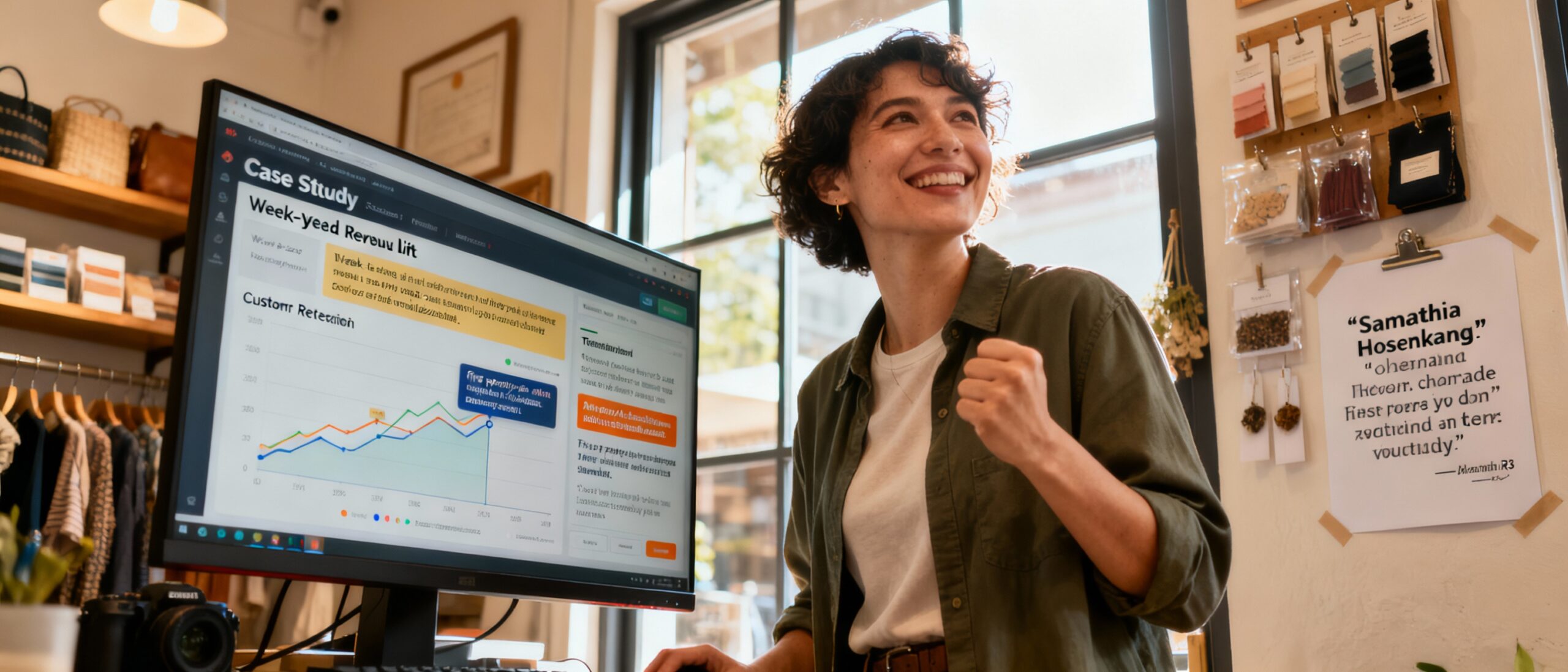From SEO to AEO: Own the Answer, Not Just the Click
Search has shifted from ten blue links to answer engines—yes, SEO still matters, but the real game is AEO: Answer Engine Optimization. Chat interfaces and AI overviews consume your content and decide whether your brand earns the featured explanation, the snippet, the action. First‑party data is your secret weapon because it surfaces the questions your customers actually ask—and the phrasing they use. That's how you structure content that wins both SEO and AEO.
Use your captured queries, on‑site search logs, and email replies to fuel AI Content Marketing. Turn the top 25 customer questions into canonical answers, pricing explainers, and troubleshooting guides. Add the language customers volunteer to your copy—verbatim—and keep it current. AI automation can draft, tag, and route these assets, while your editors sharpen the voice and lock accuracy.
Real-World Success Story
An anonymized SMB retailer we worked with—a three‑store home goods brand—stood up the 30‑day engine with a small team and an agent layer via ezwai.com. They turned on consented capture at checkout, stitched store and web identities, and launched three triggered flows. In eight weeks, they saw double‑digit lifts in triggered revenue and email click‑through, and customer service tickets fell because product answers were published in plain English.
Make it tactical. Mark up pages with schema (FAQ, Product, HowTo). Embed first‑party proof points (return policies, delivery windows, localized inventory) that answer engines crave. Connect your CDP so on‑site modules adapt to known visitors, and your chat widget doesn't ask what your customer already told you last week. Answer engines reward brands that learn fast and ask permission faster.
Real-World Case Studies
Big or small, the pattern holds. As Samantha Hosenkamp put it, "First-party data is the new gold standard for businesses. It allows companies to build trust with their customers while creating personalized experiences that drive loyalty and revenue." David Raab, founder of the Customer Data Platform Institute, is just as blunt: "The shift to first-party data is not just about compliance; it's about creating a sustainable competitive advantage. Businesses that master first-party data will be better positioned to innovate and grow." That's not consultant theater—that's operating reality.
"First-party data is the new gold standard for businesses."
Sephora built loyalty that works like a data flywheel. Beauty Insider collects preferences, shade matches, and purchase history, then pushes personalized recommendations and tiered perks. The program's strength isn't points; it's how the data powers relevant product discovery and retention. Teams federate this dataset into marketing and service so the brand feels remembered, not creepy. The lesson for small retailers: a simple preference center and post‑purchase quiz can punch way above its weight when it feeds segments and onsite modules.
Amazon's personalization is famed for a reason: it treats every click as a hypothesis about intent and tests relentlessly. First‑party signals—views, dwell time, cart sequencing—shape product carousels and email follow‑ups in near real time. You don't need Amazon's scale to copy the mechanics. A lean stack with event tracking and a CDP can run the same play at local‑business speed: show complementary products, trigger education instead of discounts for high‑consideration items, and throttle messaging when frequency risks fatigue.
If you remember one thing, make it this: owning your data isn't a compliance chore—it's the most capital‑efficient growth engine available. Put AI Agents to work, give your AI employees clear guardrails, and build for both SEO and AEO so your best answers travel. Do it once, maintain it weekly, and watch performance compound. Thirty days to get live; a year to make it unstoppable.

